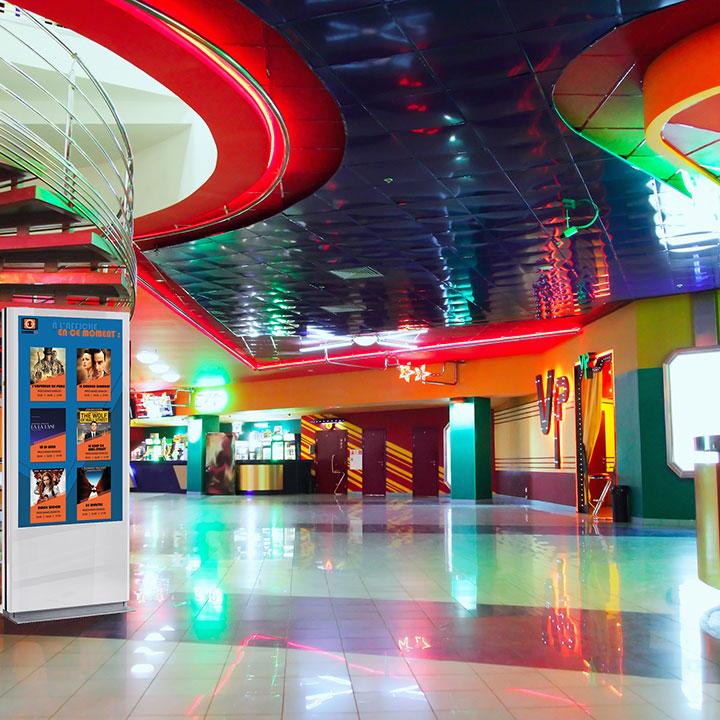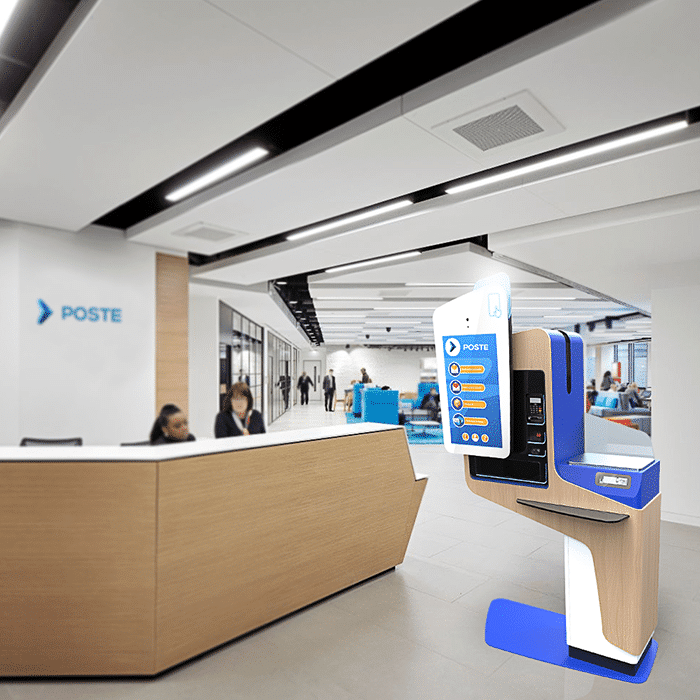Blog,
Dynamic displays and traditional displays: what are the differences?
17 November 2021
Today, displays are widely used in urban spaces to capture the attention of the public: in the subway, at bus stops, in the lobby of a train station or airport, in the window of a store… It is one of the major communication levers used by companies to disseminate their messages, but its possibilities have been transformed by the development of digital technologies.
Dynamic displays have made it possible to broadcast animated or video content remotely and in real time. But the type of content is not the only difference between dynamic displays and traditional display media. They also have variable impacts on audiences and do not involve the same processes of message production-distribution.
Discover in this article the main differences between dynamic screens and traditional display screens !
Differences in access: a regulatory framework influenced by environmental objectives
Traditional and dynamic displays are subject to different regulatory frameworks that influence their access conditions. For example, paper displays are less subject to regulation because of their ephemeral nature. But people’s concerns about environmental protection are also changing the laws, transforming the conditions of access to certain media.
Traditional and dynamic displays do not have the same arguments when it comes to the ecological issue.
Recycling of waste favored
Traditional displays are often criticized for their waste production. A display campaign needs a large quantity of paper supports and consumes a lot of ink for printing. Moreover, if we also take into account the CO2 emissions linked to transport, the volume of CO2 production of traditional display is close to 200kg/year for an 8 m² display.
And if the pollution linked to the lighting of these displays were added to the equation, this would further increase the ecological balance of paper displays. That said, efforts are being made by companies to reduce the amount of ink used or to encourage recycling and re-use of paper.
Reduction of light pollutione
Digital signage is often criticized for its energy consumption and light pollution. The scarcity of resources is a major concern for people, and light pollution is not without impact, as it could have an impact on biodiversity and disturb the biological rhythm of individuals.
However, technological innovations have made it possible to reduce these effects. For example, LED technology significantly reduces the impact of dynamic displays. It is known for its low energy consumption (compared to LCD screens, for example) and it has a long life span: under normal conditions, 100,000 hours of broadcasting, or more than 10 years of continuous display.
Differences in the attractiveness and personalization of messages
Dynamic displays and traditional displays have varying effects on audiences. The animated or frozen nature of the content gives them different properties and advantages in message delivery.
Static images in traditional displays can only deliver single messages. In addition, they are dependent on light sources. They present a double disadvantage with respect to the communication objectives: the volume of information diffused is limited so as not to alter the clarity of the message, and their visibility is relatively dependent on the environment.
Moreover, this static form implies an important graphic reflexion so that the message is synthetic, while respecting the constraints of impressions and realization inherent in the paper supports.
Des messages créatifs
That said, traditional displays can paradoxically give way to great creativity when their frameworks are reinvented. For example, street marketing operations can be very attractive, with messages fully integrated into the environment of the audience. This type of unique communication, even if exposed in a single place, can greatly benefit from an important visibility thanks to social networks, as long as it is original enough to be shared on the web.
Traditional displays can therefore capture the attention of audiences, but this success depends largely on the creativity of the graphic design. They need a “wow effect”. Whereas dynamic displays maintain this attention more easily and naturally, because the animated nature of the message attracts the human eye. To put it another way: we tend to look at what moves! This makes dynamic displays attractive.
Largest target hit
Dynamic displays also have another strength related to digital: a single screen can display a greater number of contents, and these contents can be animated. Video content has the advantage of going further in the potential complexity of the messages displayed, which also increases audience engagement and strengthens the brand image.
Finally, it is possible, thanks to dynamic displays, to increase the precision of the targeting of advertising messages. The content can be programmed according to the time of day, the time of year, and can be determined according to the typology of the people who pass in front of the display.
Differences in test and learn: a question of adaptability and reactivity
The biggest difference between dynamic and traditional displays is the time required to produce the content –
If a company already has a fleet of screens, new messages can be easily produced and delivered instantly to the entire fleet. For traditional displays, however, it takes several weeks to produce the content – depending on the complexity of the design – and to deliver it.
This is why dynamic displays offer greater adaptability in brand communication –
Digital technology allows content to be modified at any time, i.e., to reshape a communication action schedule when necessary. In addition, digital tools often offer a data collection and analysis system, which allows companies to more easily evaluate the effectiveness of their communication campaigns.
What about steering on a ROI model?
- Dynamic displays are therefore particularly well suited to ROI approaches, because they allow better measurement of the performance of communication campaigns.
- Any question concerning the investment refers to the barrier to entry from a financial point of view. Here, traditional displays have the advantage of being more affordable because the entry cost is reduced. But considering their very limited impact in time, and the repetition of messages necessary to ensure a good memorization with the public, traditional displays can very quickly require substantial budgets.
- Dynamic displays are therefore a more important investment at the beginning, but lead to a better profitability in the long run. The purchase of the material is compensated with time by the savings realized on the production of the contents and on the display volume.
- In addition, the better targeting of dynamic displays (through content personalization) ensures a better performance of communications, which increases the return on investment.
It is not on the attractiveness of their contents that dynamic displays and traditional displays differ the most. They both have advantages and disadvantages, and are probably more complementary than antagonistic. The biggest differences come from the properties of digital, thanks to which dynamic displays have more convincing arguments for any company seeking to maximize (1) its reactivity from an organizational point of view, and (2) its efficiency in personalizing and delivering its messages.
Check out our dynamic display solutions
Check on our other articles


